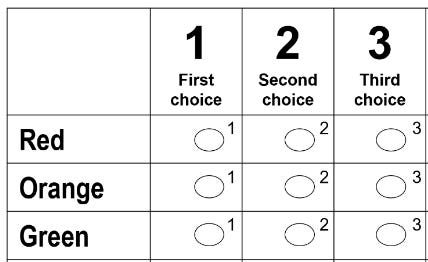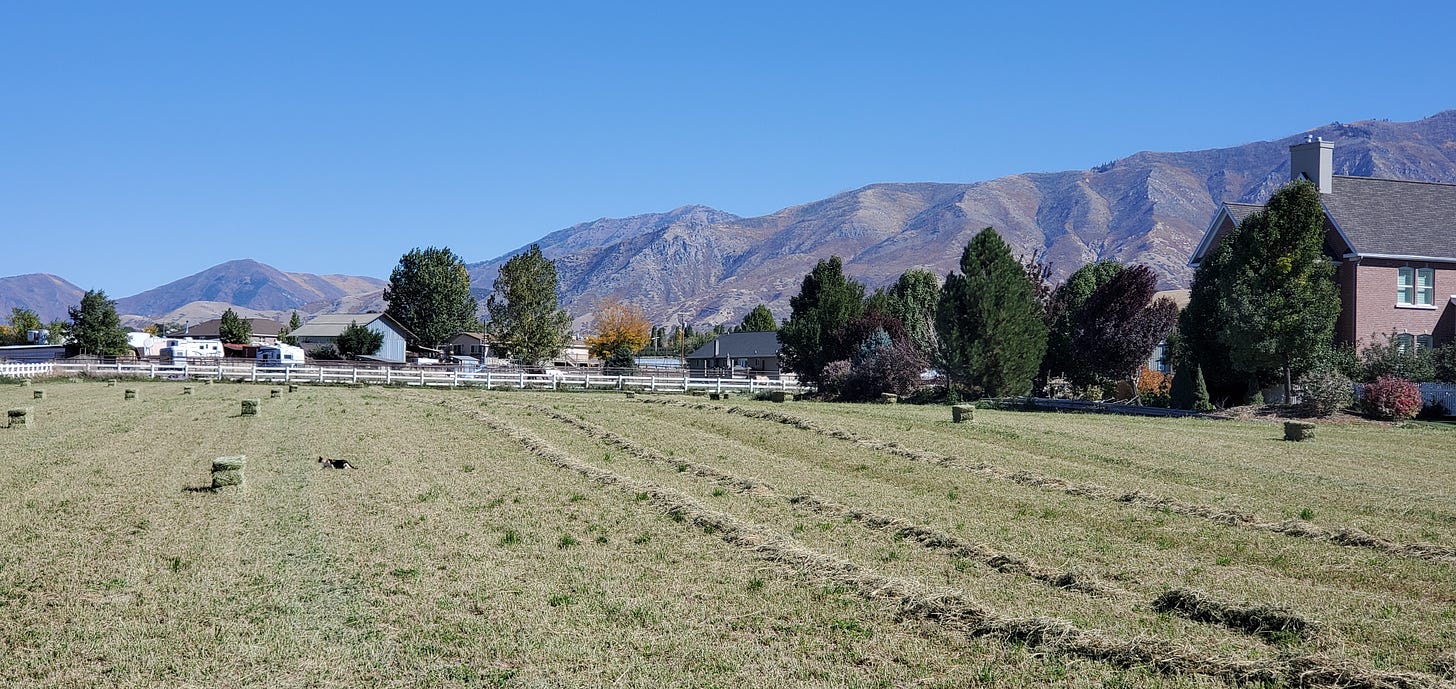Imagine being a mayor. What if I offered you a deal: Your town gets paid $10 for every resident in it. All you need to do is accept my Ranked Choice Vote counting method. There’s one caveat though: I will throw away every third vote cast. You find that unacceptable? OK. Let me drop the mention of throwing away votes. How about now?
Genola in Utah, is a quaint farming town located just south of the great Utah Lake. A visitor is greeted by beautiful valley landscapes decorated with vast orchards, lined with poplar trees, all of that on a backdrop of tall mountain masses to the East. Utah state, including Genola, belongs to largest growers of tart cherries nationwide, next to Michigan, Mayor Marty Larson tells me. “If Michigan freezes, there is Utah; if Utah freezes, there is Michigan,” he smiles, standing next to one of the orchards that delivers cherries for your pies.
Our meeting was a serendipity. On a warm Fall Sunday, my wife and I decided to pay a visit. Not knowing how beautiful the place is, our initial motive was plain curiosity: In the recent analysis of the 2021 Utah Instant Run-Off Elections (written with my co-author Warren D. Smith), Genola earned a sort of “infamy” for being a town with the most discarded IRV ballots in Utah County. In 2021, there were three candidates running for two seats on their City Council. Alas, the races were conducted as Instant Run-Off (IRV) elections, which is a preferential counting method commonly (albeit inaccurately) termed Ranked Choice Voting (RCV). Given that, Genola voters were asked to rank these candidates using a tabular format similar to this:
If I wanted to rank candidate “Red” as first, “Green” as second, and “Orange” as third, I’d place a mark in first row / first column, followed by a mark in third row / second column, followed by a mark on second row in third column. As explained in Section 3.1 of the report, this format—unfortunately—allows for two serious mistakes a voter can make: a so-called overvote in which two candidates are marked in same column (Example: “Red” and “Green” both as first choice), and a so-called undervote whereby a voter introduces a gap between ranks (Example: “Red” first, followed by empty second rank, followed by “Green” as third). How can anyone mess that up, you may think. But if you are realistic, you admit that the above format is unusual and requires some deliberation: if it is a two-seat election, may I rank two names as my top choices? Seems sensible. (Answer: No, your ballot will be invalid). I like one candidate and dislike another, may I rank one first and the other last, with a gap? (Answer: No, your ballot will be truncated and then possibly tossed in the second-seat race). Do all voters read the fine print? (Answer: Unlikely). Were all voters even aware that this was an IRV election? I can’t tell. In the end, the sure truth about this Genola election is that 16.6% of ballots were discarded in the first-seat race, followed by additional 16.2% in the second-seat race, amounting to a whopping 32.8% ballot waste! This is not new. IRV has been associated with higher degree of voter confusion and ballot discardment.
As we drove on a road passing Genola’s church, we met a lovely lady walking with her son along the road. Their car broke down. Naturally, we offered them a ride but they declined with a smile, explaining how much they enjoyed the warm afternoon walk. We only spoke for a couple of minutes before the head of the family arrived to the rescue - a man none other than Marty Larson- the Genola Mayor.
“We had had a meeting with a presentation on RCV and all of us liked the concept. It saves us the primaries which cost the town $15,000. Not having primaries attracts more candidates. Saving $15,000 is like giving every resident of Genola $10 back,” says the Mayor. I quickly pictured the standard IRV-lobbyist presentation that was given to them. When one listens to these advocates, IRV sounds like the best thing since sliced bread. No problems with it whatsoever! It is hard to blame mayors and city councils for being bamboozled into accepting IRV - the concept is relatively technical and there has been a stunning absence of critical stance in Utah. Across different towns, none of the council members I spoke with were aware of IRV’s paradoxical properties, such as Non-Monotonicity, Participation, and Condorcet Failures (check our report, video presentation, podcast, and a related Substack post on the recent Alaska IRV debacle, too). Explanations are usually met with dropping jaws and disbelief. Fortunately, the 2021 Utah County IRV election data were released. Our main findings: (1) serious paradoxes occurred, and (2) significant voter confusion resulted in sizable amounts of ballots discarded, sadly, Genola topping the charts.
The pro-IRV advocacy group FairVote (funded, among others, by the Soros-family’s Open Society Foundation) engages in Utah via lobbyists. Their IRV presentations revolve around two points: getting rid of primaries (cost savings) and a guarantee of a majority winner. In a recent post we show how the latter guarantee is profoundly misleading. While I—as a voter—like primaries and take them as an opportunity to learn about the (potentially numerous) candidates, I can see Mayor Larson’s financial point - he cares about saving his hardworking citizens’ money. Unfortunately, that $10 saving due to adopting IRV resulted in one third of votes for the second council seat being tossed because IRV ballots are confusing and error prone.
Behind every vote, there is a human being. Someone with a hope they will make that small difference. It was sad to see the Genola ballot statistics. In my opinion, the voters should be outraged. I know I would be. But Genola is certainly not alone having IRV troubles. For example, the town of Moab experienced almost 9% of ballots tossed out in their council race. Adding insult to injury, IRV in Moab also delivered four serious outcome pathologies making the infamous 2008 Burlington IRV election look like a walk through paradise. (For detail on other Utah County towns, the reader may refer to Table 1 and Table 2 in our report.)
Going into 2023, all Utah’s townships that signed up to the RCV/IRV pilot program have the option to (dis)continue their participation. My sincere hope is the councils make educated decisions and our next visit to the unquestionably beautiful town of Genola will no longer be due to IRV at all. Perhaps just to chat with the friendly Mayor and buy some cherries!








Thanks for all the work you've done, and continue to do, on this issue! It's never easy to be the guy who bursts everyone's Happy Talk bubble.